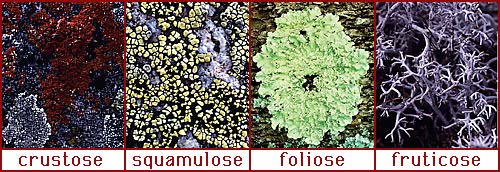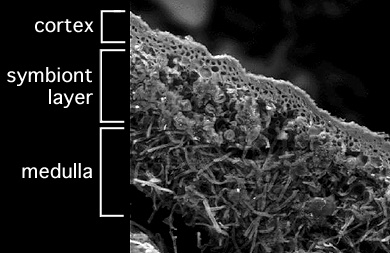







Lichens occur in one of four basic growth forms, as illustrated below:

Despite the wide diversity of the basic growth forms, all lichens have a similar internal morphology. The bulk of the lichen's body is formed from filaments of the fungal partner, and the relative density of these filaments defines the layers within the lichen.
At its outer surface, where it comes in contact with the environment, the filaments are packed tightly together to form the cortex. The dense cortex serves to keep out other organisms, and helps to reduce the intensity of light which may damage the alga cells.
The algal partner cells are distributed just below the cortex in a layer where the fungal filaments are not so dense. This is very similar to the arangement in a plant leaf, where the photosynthetic cells are loosely packed to allow air circulation.
Below the algal layer is the medulla, a loosely woven layer of fungal filaments. In foliose lichens, there is a second cortex below the medulla, but in crustose and squamulose lichens, the medulla is in direct contact with the underlying substrate, to which the lichen is attached.



